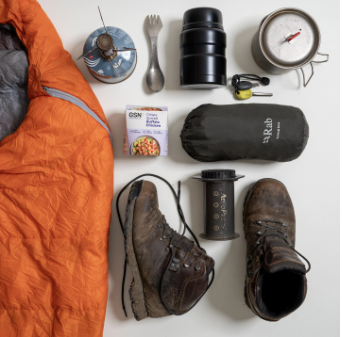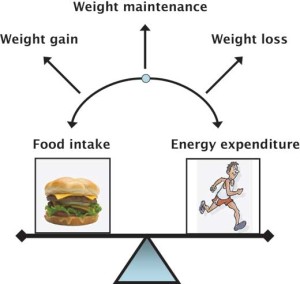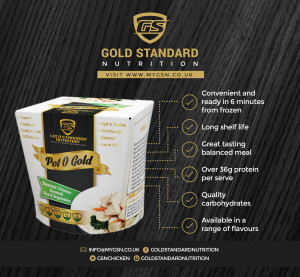

Loading...

Loading...
With the average Brit eating out at a restaurant 1.5 times a week, is your diet doomed to fail before it’s even began? Or maybe instead of avoiding restaurants and fast food all together, we should be looking at the best ways to incorporate eating out while still hitting your macros.
We’re going to look at both ends of the spectrum when it comes to managing your diet on the go and see whether it’s better to vaguely “guestimate” what’s on your plate or dial it in and thoroughly check nutritional’s well in advance. We may not necessarily provide a conclusive correct answer to suit everyone but we will provide a couple of solutions that may be the suitable answer for you.
We’re going to start by splitting you into 2 groups; Person A and Person B, providing tips for each and giving an overall general opinion on each method. If you don’t feel like you fall in between the 2 groups or there is a group we are completely missing we’d love to hear from you.
Person A
Person A is thorough, meticulous and may even have a Masters Degree in Organisation. Person A may be eating 7 meals a day, 7 days a week with each ingredient measured to the nearest gram. It’s also likely they will record macros in an app like myfitnesspal (sometimes even posted on Social Media to let others know how good they are at organising and weighing food).
If you are Person A, hats off, I applaud you. The time, self control and dedication it takes to keep your diet in check deserves some sort of award and if all your measurements are correct and you are consistent you will see phenomenal results.
Here are our top 3 tips on hitting your macros if you are Person A
1. Check the menu on the website in advance
Most restaurant websites now show a full, up-to-date menu of what they have available. Some restaurants (usually chains such as Nandos) also have nutrition tables for viewing, making it even easier to fit eating out into your macros. Myfitnesspal is a great interactive food diary that creates a really simple way to track what you eat as well as providing a clear and understandable way to visualise your diet, using myfitnesspal or an alternative but similar app is a must if you want to track the details of your diet.
Checking the menu in advance will allow you to choose what you’d like to eat so that you do not need to listen to your sub-conscious carb-craving devil on your shoulder when it’s time to order.
2. Get to know your weights
It may sound obsessive however after weighing your food for 2-3 days you will quickly get a good understand on how much certain foods weight. This doesn’t take long and you should then be able to predict measurement of foods you consume pretty accurately. Then using apps such as myfitnesspal you will be able to continue to calculate macros fairly accurately by entering an educated guess of the weight of each ingredient in your meal.
3. Don’t forget the fats
Fats carry and help to seal in flavours. More specifically butter and vegetable oils. If you ask a chef for a description of a perfect steak it’s likely they will describe one with mosaic-like marbling of fatty tissue running through a primed cut of beef however, ask the same questions to an athlete and it wouldn’t be surprising if the words “lean” and “fat-trimmed” cropped up. The whole purpose of eating at a restaurant is to enjoy a tasty and delicious meal that might be hard for you to replicated yourself, whether it’s through added fats in dressings and cooking methods or the meat itself, chefs like to use fats as they encourage flavours. You should account for that.
By combining tips 1 and 2 you should be able to still account for tip 3 however it may be easier to enter an additional 10g of fat into your diet tracking tool e.g myfitnesspal as this should cover additional fats that may have been added to your meal. In most cases when dieting your better off being slightly under on your total calories from fat than over.
Person B
I am trying to remain impartial however through experience in terms of long-term compliance Person B tends to be more successful. Person B has a more relaxed view on their diet. The odd snack here and there for an extra 10 minutes in the gym and similar “tit for tat” to stick to a rough diet.
This may not be tweaked enough to get you on stage at Mr.Olympia but if you train hard and stick at it you will see great results while not feeling too restricted to enjoy a normal lifestyle.
Here are our top 3 tips on hitting your macros if you are Person B
1. Educate yourself about food
This is quite similar to tip number 2 for person A. It’s all about being able to make a fairly educated guess so that you don’t create too much of a calorie surplus or calorie deficit when switching meals in and out. We’ve made a suggestion below for a common easy-switch.
| Regular Meal – 150g GSN Chicken Breasts, 15g Coconut Oil, 50g Brown Rice. 37.5g Almonds (on big handful), 100g Raspberries | Restaurant Meal – Nandos ¼ Chicken, Regular Spicy Rice, Regular Coleslaw |
|
| Calories | 794 | 777 |
| Protein | 56.45 | 57.3 |
| Carbohydrates | 58.5 | 54.6 |
| of which sugar | 6.2 | 12.1 |
| Fat | 37.2 | 36.5 |
| Salt (g) | 0.6 | 4.2 |
In terms of macros these differences would have very little effect on composition, however looking in more detail it’s quite easy to see high amounts of fats used in restaurant cooking vs cooking at home as well as explain that “food hangover” you may get the morning after eating out at a restaurant with excessive salt levels.
2. Use exercise as a balance
This one is simple, effective and can help you to get fit. A Mcvities Chocolate Digestive is 83 calories. which equates to around 15 minutes cycling very lightly, around 7 minutes of jogging very slowly or around 6 minutes (2 round) on a punch bag. Use this method to include food and exercise for extras you may get when you eat out.

3. Categorise your meals
Understanding your meals and your body is a simple way to extend the sustainability of your diet. I’d recommend categorising your meals so you know where you can be flexible, categories such as; high-carb meal, low-carb meal, breakfast, bedtime meal (high in casein), pre-workout, snacks, post-workout may work so that you can build you own personal database/menu of flexibility.
When you eat out you can then either opt for a meal that would fit your usual routine for example if you have a low-carb meal in evenings and you are going to a restaurant you could switch this meal for Steak and Vegetables as an alternative option.

We hope this post is useful to you. If you’re pushed for time but desperate to improve your diet and eat healthily we strongly recommend giving our Pots O Gold a try. High in protein and available in 8 flavours they’re a great way to begin or stick to a diet without spending hours in the kitchen.